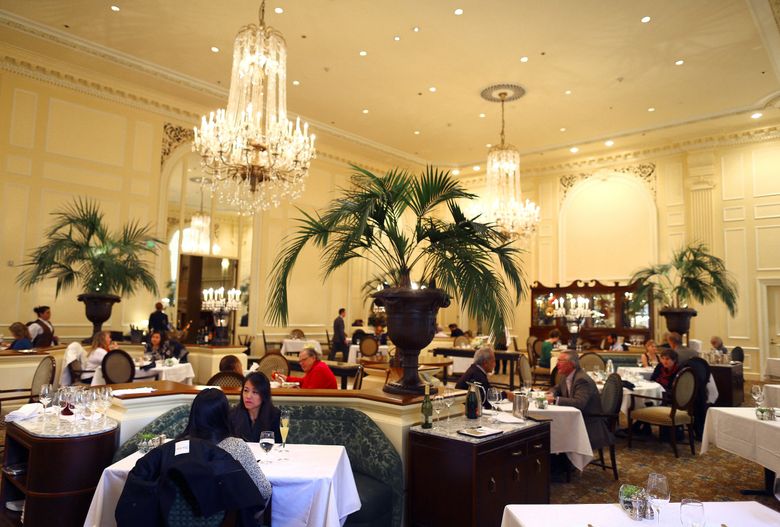Chinese Food Islamabad: Take Pleasure In Genuine Chinese Cuisine at its Best
Chinese Food Islamabad: Take Pleasure In Genuine Chinese Cuisine at its Best
Blog Article
Savor Authentic Asian Food With a Pan-Asian Spin for a Cooking Experience
Getting started on a culinary trip via genuine Eastern cuisine, boosted with a Pan-Asian spin, uses an one-of-a-kind opportunity to discover the abundant tapestry of flavors that define the area's varied culinary customs. As you contemplate these luring meals, take into consideration the social stories and historical influences that form them, each bite offering a story waiting to be discovered. Romantic restaurants Islamabad.

Checking Out Pan-Asian Flavors
In the world of global gastronomy, Pan-Asian food stands out for its amazing diversity and the harmonious interplay of tastes from various Eastern cultures. This culinary method commemorates the special active ingredients and abundant customs located across the continent, developing a tapestry of preferences that is both interesting and rewarding. Secret to Pan-Asian food is its capacity to stabilize contrasting tastes-- pleasant, salty, spicy, and sour-- while highlighting the freshness and top quality of each component.
From the umami-rich soy sauce of Japan to the intense chili peppers of Thailand, Pan-Asian food offers a considerable palette of flavors. These aspects are typically incorporated in inventive methods, boosting recipes with layers of complexity. For example, the usage of great smelling herbs such as lemongrass and cilantro, typical in Vietnamese and Thai cuisine, adds a revitalizing brightness to meals, while the unification of coconut milk delivers a creamy, rich texture.
The focus on fresh fruit and vegetables and aromatic seasonings guarantees that each dish is not just a banquet for the taste yet also for the detects. Pan-Asian food welcomes diners to begin on a cooking journey, checking out the substantial and varied landscapes of Eastern gastronomy with every bite.
Fusion Meals to Attempt
While Pan-Asian cuisine is commemorated for its conventional flavors, the contemporary cooking landscape is increasingly welcoming blend dishes that mix these classic aspects with influences from other regions. This innovative technique not just honors the abundant heritage of Eastern cookeries yet also introduces unique taste experiences that interest contemporary tastes buds.
A prime example of such a fusion recipe is the Korean-Mexican taco, where marinated bulgogi beef is covered in a warm tortilla, topped with kimchi and a zesty gochujang-infused salsa. This combination marries the vibrant, savory tastes of Korea with the vibrant, fresh elements of Mexican food. Likewise, sushi burritos have obtained appeal, integrating the delicate artistry of Japanese sushi with the passionate, hand-held comfort of a burrito, often featuring fusion active ingredients like tempura shrimp and avocado with a drizzle of wasabi mayo.
One more noteworthy meal is Thai curry ramen, which infuses the velvety, aromatic flavors of Thai curry into the reassuring brew of conventional Japanese ramen, producing a harmonious blend that tantalizes the detects. These combination dishes expand past plain novelty; they represent a cooking discussion between societies, encouraging exploration and innovation in the world of Pan-Asian cuisine.
Crucial Components and Flavors
To really value Pan-Asian cuisine, one should recognize the important active ingredients and flavors that create its structure. This diverse culinary style attracts from a rich tapestry of Oriental practices, utilizing an unified blend of structures and flavors. Trick active ingredients consist of soy sauce, fish sauce, and oyster sauce, which pass on a tasty umami depth important to Eastern recipes. Corresponding to these are rice vinegar and mirin, lending a fragile acidity and sweet taste.
Aromatic components are pivotal, with garlic, lemongrass, and ginger being ubiquitous throughout various Pan-Asian recipes. These components give a great smelling base that enhances the intricacy of tastes. Spices such as celebrity anise, cardamom, and cinnamon present warmth and character, resembling influences from regions like China and India.

Food Preparation Methods and Tips
Mastering the art of Pan-Asian cuisine requires familiarity with its distinctive food preparation strategies, each contributing to the vivid tapestry of flavors this culinary practice is browse around this web-site commemorated for. Central to these techniques is the stir-fry, a quick cooking technique that protects the nutritional stability and dazzling shades of active ingredients. Making use of a wok, the stir-fry approach enables even warmth distribution, necessary for achieving the characteristic structure and flavor balance of Pan-Asian dishes.
One more fundamental technique is steaming, especially common in Chinese food. This gentle method keeps the natural flavors and nutrients of active ingredients, making it perfect for fish and shellfish and vegetables. Dumplings, a precious staple, commonly gain from steaming, leading to soft, succulent appearances.
Cooking, also integral, presents smoky midsts to dishes such as Korean bulgogi or Japanese yakitori (asian fusion restaurant). This method commonly involves seasoning active ingredients, enabling tastes to pass through deeply before cooking over an open flame or warm plate
Finally, grasping the art of stabilizing flavors-- wonderful, sour, salty, bitter, and umami-- is essential. Appropriately layering these elements can elevate a recipe from ordinary to phenomenal, supplying a complex and pleasing cooking experience that symbolizes the significance of Pan-Asian cuisine.
Eating Experiences Worldwide
Throughout the globe, Pan-Asian cuisine provides an exceptional eating experience, commemorated for its abundant tapestry of flavors and vibrant presentations. This culinary sensation has gone beyond social boundaries, capturing the hearts and tastes buds of food fanatics worldwide. In worldwide cities fresh York, London, and Sydney, Pan-Asian restaurants work as fusions where cooking practices from Thailand, Japan, China, and beyond merge, offering diners with an eclectic mix of meals that highlight the region's variety.
The worldwide charm of Pan-Asian cuisine hinges on its capacity to provide both credibility and development. Cooks skillfully wed traditional ingredients such as lemongrass, soy sauce, and miso with contemporary methods, resulting in recipes that are both acquainted and refreshingly new. This blend allows restaurants to begin on a cooking journey that appreciates heritage while embracing modernity.
In addition, eating experiences are elevated through thoughtfully developed environments that reflect the values of Pan-Asian looks. From minimalist Japanese-inspired interiors to vibrant Thai-themed areas, each dining establishment offers an unique atmosphere that enhances the culinary offerings. Because of this, clients are not just consuming a meal yet partaking in a cultural experience, making Pan-Asian dining a genuinely global sensation.
Conclusion
The exploration of Pan-Asian cuisine uses an extensive understanding of the elaborate interaction of tastes and cooking customs throughout Asia. By welcoming blend meals such as Thai curry ramen and sushi from this source burritos, the cooking trip not just highlights the flexibility of conventional components yet also showcases ingenious contemporary methods. This gastronomic adventure, enriched by cooking methods and crucial spices, offers an one-of-a-kind opportunity to appreciate the multiculturalism and cooking creativity that specify Pan-Asian food on a global range.
Embarking on a cooking journey via authentic Eastern food, enhanced with a Pan-Asian spin, uses a special opportunity to check out the abundant tapestry of tastes that define the region's varied cooking practices.In the world of international gastronomy, Pan-Asian cuisine stands out for its impressive diversity and the harmonious interaction of flavors from various Eastern cultures. Key to Pan-Asian food is its capability to stabilize different flavors-- sweet, salted, spicy, and sour-- while highlighting the quality and quality of each ingredient.

Report this page